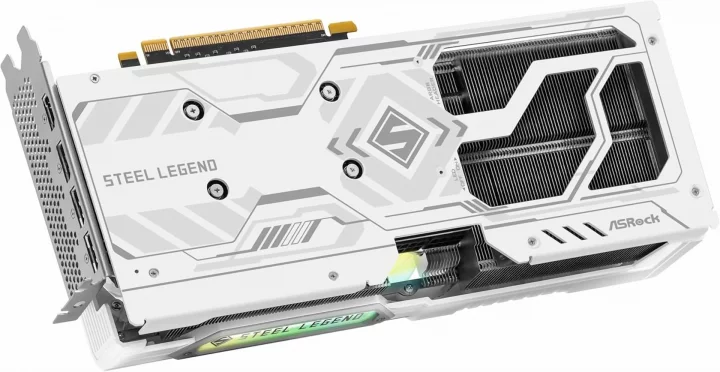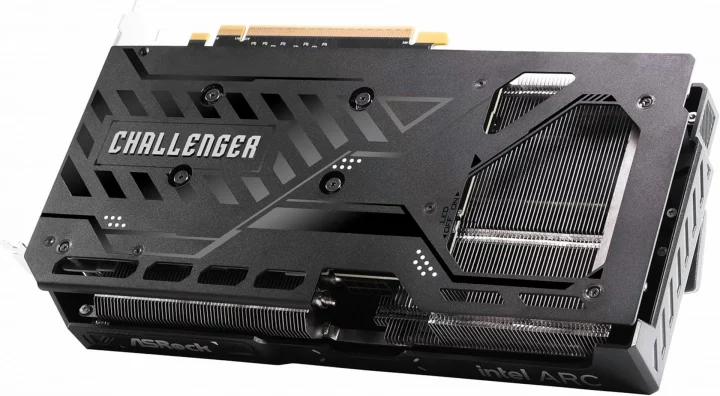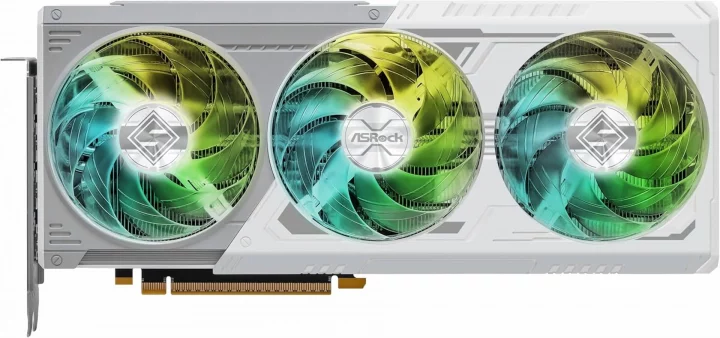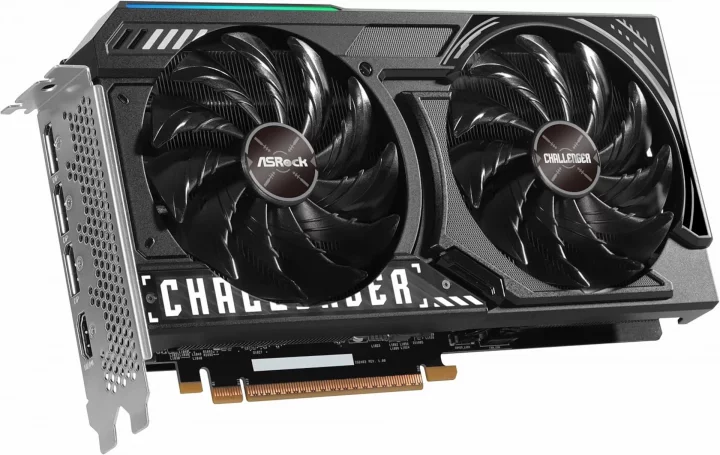Yesterday we had the leaked specifications of the new generation of Nvidia graphics. Intel is also scheduled to launch its new graphics cards in December – Arc cards of the Battlemage generation. And you, too, have now been exposed by a leak of information. It is not yet clear what all the models Intel will launch next month, but at least one is already clear: the Arc B580. This card was leaked in the product database, and then ASRock revealed the model it is preparing, which also confirmed the parameters of this graphics card.
Arc B580
Intel will probably start with the cheaper of the graphics models in the Battlemage generation, with the mid-range Arc 5 card. Named Arc B580, it nominally looks like the successor to the Arc A580 model, which with a price of around five thousand competed with the Radeon RX 6600 (and the GeForce RTX 3050, which is a class a slower card than the previous two, only selling for the same money due to the strength of the brand).
ASRock is preparing more versions of the Arc B580 card – the Challenger model with two axial fans and the Steel Legend model with three. According to the information so far, this graphic is supposed to carry the BGM-G21 chip and in it 2560 shaders with the Xe2 HPG architecture, which is already included in Lunar Lake processors and is otherwise also referred to as Battlemage. But that, it seems, is actually the codename not of the GPU architecture, but of that generation of discrete graphics.
Both ASRock cards have already appeared on Amazon, for example. We don’t yet have exact information about the reference frequency, but the clocks of both given cards are listed, which may have some factory overclocking in them. The Challenger model has the indicated GPU clock (perhaps boost?) 2740 MHz and the Steel Legend model even 2800 MHzso they go quite high.
The BMG-G21 chip apparently has a 192-bit bus, and the Arc B580 graphics will thus support 12 GB memory that is of the GDDR6 type and will run at a frequency of 19,0 GHz (effectively). This should deliver a throughput of 456 GB/s.
One eight-pin power supply
Photos of the cards that hit the Internet then revealed more. Intel didn’t go with the 12+4 pin power connector – it was reported some time ago that it was being tested on prototypes, but was apparently not chosen due to the fact that it would have no advantages, at least for this model (a report from the website Prohardver also stated that the connector is becoming less reliable than a traditional eight-pin power supply, but this would probably be more pronounced only with cards with higher consumption than 300 W).
The larger and more expensive of the two cards has two eight-pin connectors, but the cheaper Challenger has only one. The card should therefore have a reference TDP of no more than 225 W or lower. It will probably not be significantly smaller compared to the two connectors on the higher Steel Legend model, so we can probably expect something like 200-225 W.
PCI Express 5.0 ×8
The second thing visible in the photos is that the GPU probably only uses the eight-line PCI Express interface to the system (you can tell by the fact that the SMD components do not line the entire length of the slot). This makes it possible to reduce the area of the controller on the chip. This is not a completely negligible saving, since PHYs are not the smallest in the chip footprint, and their reduction in half can free up space for other functionality or make manufacturing cheaper. That’s why this solution, sometimes ten years ago only used in some cheaper Radeons, can now be seen on lower GPUs from AMD, Nvidia and Intel.
However, the contacts visible in the photo of the PCI Express connector are strikingly reminiscent of the design that appeared in the leaked photo of the connector of the GeForce RTX 5090 card, which is already supposed to be capable of PCIe 5.0. So it seems that the Arc B580 has an eight-line interface, but we are already talking about PCI Express 5.0 x16. This means that if you fit this graphics to a PCIe 5.0-capable board and processor, the throughput will be the same as today’s graphics with the usual PCIe 4.0 x16 interface. But there probably won’t be big problems even on platforms that only have PCIe 4.0.
Arc B580 will therefore be the first practically usable GPU with which PCIe 5.0 can be used on AM5, LGA 1700 and LGA 1851 boards. China’s GPU Moore Threads MTT S80 has formal primacy, but it is not very usable due to an unprepared or outright missing software ecosystem.
„Intel Arc B-Series“
Card leaks from both ASRock and Amazon indicate that the release of these graphics is just around the corner, probably just days away. Even on Intel’s website there are now mentions of Battlemage graphics, more precisely Intel is talking about “B-series” Arc GPUs, which obviously means Battlemage. According to earlier reports, the graphics will not go on sale until December, but the reveal could theoretically be as early as this week in November. In any case, there will be something new to see and explore in the GPU world before Christmas even before the new graphics from AMD and Nvidia come out (which it looks like won’t happen until after the new year).
Another thing is that Intel seems to make this initial release only with the lower model Arc B580, which logically will not be able to impress much with its configuration (it will have to attract a favorable price). According to leaked reports, the Battlemage generation was supposed to have an even more powerful chip with 4096 shaders and a 256-bit bus, which could be based on the Arc B770 or B750 graphics (labeling is uncertain). But there is no mention of these higher models anywhere yet, and we still don’t know if this chip has been canceled and will really come out.
If only the cheaper Arc B580 without the B750 or B770 is available at the unveiling, and the more powerful model will not be released until 2025, it will no longer be able to make such an impression. In the meantime, new more powerful Nvidia cards will be released, which will probably overshadow Intel’s efforts…
Resources: HardwareluxxVideoCardz (1, 2, 3)
Source: www.cnews.cz






